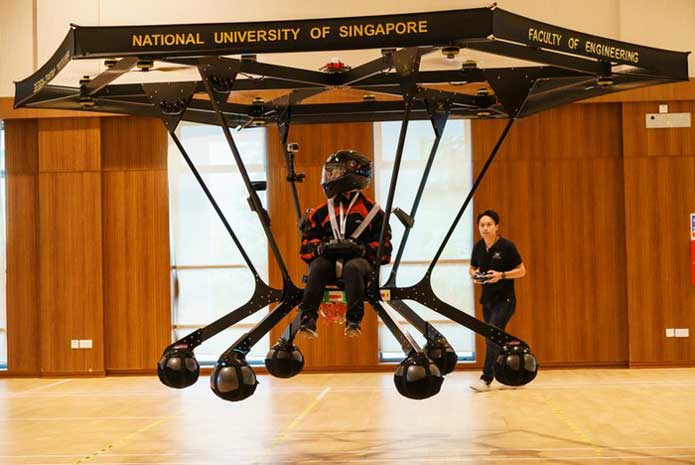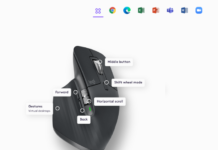Snowstorm – NUS Students build personal flying machine that carries humans for 5 minutes
The snowstorm, a personal flying machine, is an electric-powered aircraft, designed and built by a team of engineering students from the National University of Singapore, can be controlled by a human pilot and is capable of a vertical takeoff and landing.
This personal aircraft is reportedly capable of carrying a single pilot weighing up to 70 kilograms for up to five minutes and is powered entirely by electricity. The snowstorm was created under the university’s FrogWorks program. Rather than a mode of transportation, the researchers believe it will be more of an electric aircraft for personal recreational use in a large indoor space.

“A common trope in popular science fiction is the projection of humans flying on our own — think the Jetsons, or even Back to the Future. NUS’ Snowstorm shows that a personal flying machine is a very real possibility, primarily as a means to fulfil our dreams of flying within a recreational setting,” said Dr Joerg Weigl, one of two supervisors of the project, who is from the Design-Centric Programme at the NUS Faculty of Engineering.
The Snowstorm is built around on a large, lightweight aluminium and carbon fibre hexagonal frame with Teflon ropes. The electric flying machine is equipped with 24 motors, each of these motors drives a 76cm(30 in) diameter, 2.2 kW propeller.
The pilot seat is located in the center of the machine, its weight supported by six landing gear legs, the bottom of which is an inflated ball that absorbs shock when landing. The Snowstorm also includes three rechargeable lithium battery sets which provide a total power of 52.8 kW.
The pilot can adjust roll, pitch and yaw, as well as thrust, but the craft also offers a number of automated flight modes, including altitude hold, loiter and position hold. The team has also worked in a separate switch that can be controlled from the ground to end the flight and bring the machine to a landing, should the pilot lose control of the machine.

“Designing and building Snowstorm was a great learning opportunity for us. The toughest part of this engineering challenge was ensuring a good thrust to weight ratio to allow the craft to lift a person into the air. At every stage of our design, we constantly had to balance and consider trade-offs between the types of materials, their characteristics and weight. In some instances, we even 3D-printed parts, such as our landing gear mount, just so we can have a customised and optimal fit,” said Mr Shawn Sim, a third year NUS Engineering student.
The team of engineering students from the National University of Singapore first tested their design on a smaller 1/6 scale prototype, before proceeding with the massive task of building the current prototype.
“Recent advances in motors and battery technology has made it possible for us to literally take to the skies,” said Associate Professor Martin Henz, who also supervised the project. “The NUS team will continue to fine-tune Snowstorm, working on mechanical safety measures, propeller and motor configurations, and control software and hardware to achieve the high levels of safety, simplicity and performance required for recreational use by the general public.”
















































